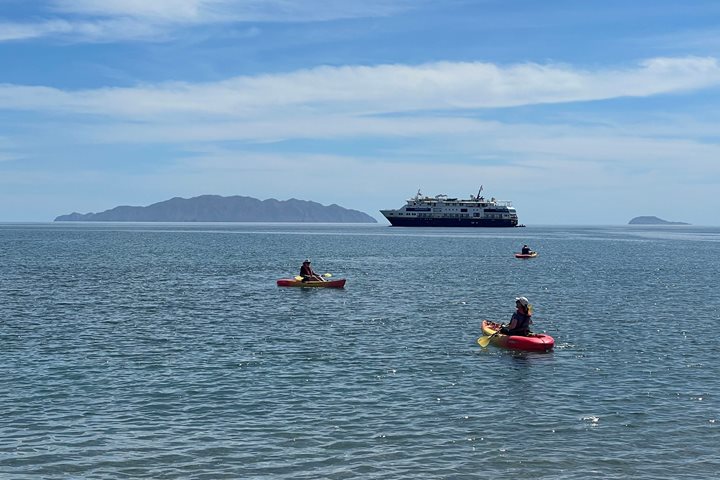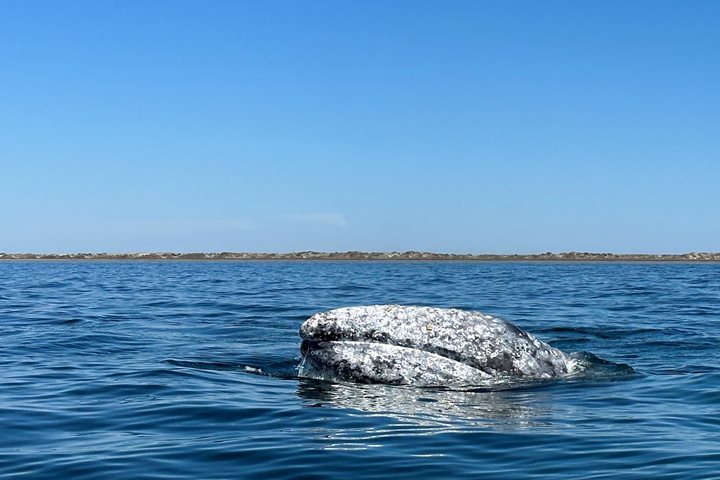No day is the same in Southern Baja. Unlike the clear skies of prior mornings, a layer of cloud cover threatened to conceal the rising sun from guests who emerged from their cabins this morning. But as is expected more often than not, the sun broke the horizon on the Pacific Coast of Baja.
We began the day anchored just outside the Bahia de Almejas. The morning was met with anticipation from the passengers and staff of National Geographic Venture. The reason: we planned to travel from the ship into the bay to search for gray whales. Just the day before, we had acquainted ourselves with this large cetacean as we entered a series of protected bays. What we hadn’t done yet was observe from the fiberglass boats known as pangas. Observing whales from these smaller boats often makes for more intimate experiences than observing from larger vessels like National Geographic Venture.
Following breakfast, the skies began to clear. Pelicans and cormorants moved purposefully over the surface of the water, heading in all directions. Meanwhile, frigatebirds lazily soared high overhead. They often appeared suspended like permanent fixtures across the seascape. The environment teemed with coastal birdlife, suggesting that the bay harbors appreciable numbers of fish.
Pangas driven by local boat captains carried off small groups of passengers, staff, and crew to nearby areas known for aggregations of wintering gray whales. Within minutes of arriving, the presence of multiple gray whales was apparent. Whales were seen surfacing, rolling, and spyhopping. When spyhopping, a whale lifts its snout out of the water, sometimes high enough for the eye of the animal to break the surface.
All passengers could see these behaviors from the small boats. Guests always hope for gray whales to approach the boats. Happily, we all enjoyed close observations of curious gray whales. In some cases, the whales approached the pangas for several minutes. It’s not known why whales approach the boats, but these animals are curious and intelligent. They are no longer threatened by intentional human persecution like they were historically. It may be that these animals approach us today for reasons that we can relate to ourselves at some level…perhaps out of curiosity and for connection.







